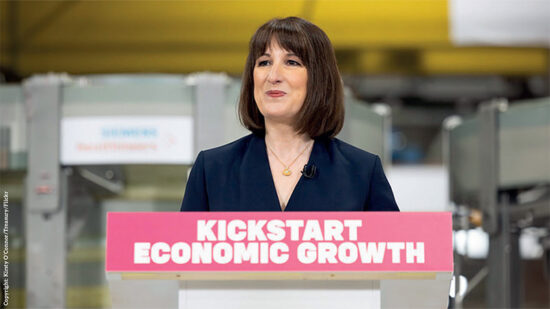In the six years since Richard Champion has worked for South African headquartered financial service group Sanlam, the focus of his work has become much more international than he was previously used to.
This has notably involved developing services for South African expats based in various parts of the world, such as the UK, Australia and parts of Europe.
Champion’s background on the UK private discretionary fund management side, including MGM Assurance and Pavillion Asset Management, has therefore become infused with a global perspective.
“We’ve also expanded the business as part of the Sanlam takeover. It’s given us more capital to broaden out the range of services we offer across the expat market,” he said.
One global voice
He says that within Sanlam Private Investments, which is the wealth management business in the group, its asset allocation is consistent across the world.
So the view on global equities will be the same whether the client is South African, UK or Australian, though from a currency perspective in particular, there might be a “very different set of drivers”.
“How it’s implemented locally will depend upon the local asset allocation team. Our clients, for example residents in South Africa with interests in Europe, know they’re going to have a consistency of approach when they talk to my colleagues in Cape Town or the portfolio managers here in London.”
The best example of how local factors come into play is with the treatment of cash, he says.
“In South Africa you can get a nominal return on cash with rates at around 6%. That might not get you a real return after inflation but at least you’re getting your client something after fees, which is positive.
“In the UK it’s almost impossible to dothat after fees and so for me that is the clearest example of how the local element has to interpret what we’re looking to do.”
In the UK, the only current reason Sanlam would go significantly overweight cash for the clients domiciled there would be if there was a sudden likelihood of a very strong correction in risk markets, which he does not foresee happening.
However, the potential flexibility of the approach does allow for the portfolios of Sanlam’s highest kind of risk client, labelled as ‘adventurous plus’, to go as much as 30% into cash over the short term but this would be an “extraordinary set of events”.
“For lower-risk clients we’d potentially put even more into cash than that. Our view with a high-risk client is they’re paying us to take some risks.
“We have a whole architecture underlying what we do to ensure that everything is controlled in terms of what we’re doing for clients.”
News versus noise
From this global central position with local implementation, the next stage is to look at the philosophy and process.
“Effectively what we’re saying is that history is a pretty good guide to asset selection. So if we see assets which are particularly high relative to their history, that’s going to cause some alarm bells to go off.
“We like to buy low and sell high, but it’s a little bit more complicated than that, because we see different influences on markets at different times. Some of these influences are very short term by nature, he explains.
“Typical noise might be what’s going on tragically in the Middle East at the moment. In nearly every scenario you care to paint, how does Gaza have an influence on the long-term valuation of assets? I regret to say it has very little in our view.”
He cites a classic example where the price of crude oil trebled in the mid-’70s, massively stoking inflation and the cost of doing business in the developed world.
The short-term noise of geopolitics can provide opportunities because markets might push values down in areas Champion likes, but he says he does not try to be too tactical.
Warning signs
The second area of focus is medium-term trends, such as the property cycle, which only work by getting into them early on and are a “struggle” to time right.
The third focus is on the long-term direction of markets, a great example of which was when Bill Gross, chief investment officer of Pimco, said at the end of April last year that the global bond bull market had peaked.
“He more or less called it to the day. There he’s identifying a long-term trend that’s been going on since the very early ’80s.You have a 35-year trend and we think it’s coming to an end.
“At the same time we’ve got developed country bond yields at levels they’ve never been in history. That comes back to what I’m saying about the valuation argument. Those two things flag a warning to us.”
This doesn’t necessarily mean that there is a bond bubble and the whole thing is going to collapse, but just means from Sanlam’s perspective a secular shift away from fixed income.
Another example of a potential long-term trend centres on the December 2012 election of Japanese prime minister Shinzo Abe whose policies are aimed at turning around the sustained bear market in Japan.
“That’s something we are looking at very closely. The depth of structural reform required to make it a long-term trend rather than one of these short-term, medium-term trends is so profound that I’ve got time to see that in evidence before we get very excited about it.
“We’re never going to get in right at the bottom, but if we see value at multi-decade lows and we see factors which might change the direction for the underlying asset class then we can afford to phase in over time for clients in a pragmatic sense.”
Bigger isn’t always better
He points out that Sanlam’s relatively small team of investment professionals in the UK and South Africa, around 15 people covering fixed income, equities, and asset allocation, is in contrast to some of the big investment houses.
“If you’ve got massive teams you can make a much more detailed decision set.
“It doesn’t mean you get those decisions right, whether you’re oursize or a really big company.
“As long as we’ve got a process in place that allows us to do that, then we can compete nose-to-nose with these guys.”
On the geographical front, the UK office portfolios for expats has no exposure to Japan at all for the reason he has given already, even though the world index should give portfolios a 10% equity weighting.
“What catalyst would trigger a change there? Really deep implementation of the so-called third arrow reforms of Abe.”
“European assets, although the background economy isn’t great, are international by nature and the valuations in many cases are attractive.
“We’re looking for specifically more aggressive peripheral European exposure. That’s not done very well in the past six weeks to two months but we’re still quite happy with it on the medium to longer term.”
In the US, Sanlam has a slightly underweight position relative to the benchmark, while more heavily weighted UK exposure reflects in part the international nature of companies there, which could be listed anywhere given the nature of the business and in some cases have dual listings, for example Unilever.
Value judgements
Emerging markets are often played through companies that happen to be positioned in the developed markets.
In this context, he says he has “always liked the idea that you buy the companies that make the shovels for the gold rush, not hunt for the gold”.
“We have three core themes within our asset allocation matrix at the moment. The first is peripheral Europe, the second is emerging Asia, particularly emerging Asia rather than emerging markets, and the third is UK mid-cap companies.”
UK mid-caps provide what he calls a “very durable theme”.
“We’re not saying ‘we’re buying at the bottom’ because clearly we’re not. UK mid-caps have been a great performer for a long period of time. We just think that it’s got legs still and will continue for a good deal of time.”
Looking ahead, Champion is still positive on equities but he wants “a little more bang for our buck” and if there is going to be a pullback in equity markets “we would potentially raise money from fixed income”.
“The key for us at the moment is that we find it difficult to identify significant pools of obvious value between asset classes.
“So our expected returns for global equities over the next 12 months and indeed over the next three years might be 6% to 8% pa. Which isn’t that bad, but a lot of that’s obviously coming from the income as a total return.”








